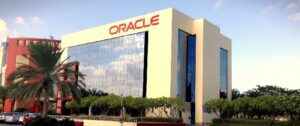Samsung’s Q3 Profit Surpasses Expectations, Sparking Optimism for Chip Market Recovery

Samsung Electronics released preliminary figures for its third-quarter profits, revealing a smaller-than-anticipated 78% drop. This news comes as a glimmer of hope for the beleaguered memory chip market, which is showing early signs of emerging from a prolonged downturn.
Shares of Samsung saw a notable 3.3% surge at market open, outpacing the broader market’s 1.4% increase (.KS11). Analysts speculate that memory chip prices may have hit rock bottom in the third quarter, with certain types already displaying signs of resurgence.
The world’s leading manufacturer of memory chips and smartphones estimated its operating profit at 2.4 trillion won ($1.79 billion) for the July-September period, a decrease from the 10.85 trillion won reported the previous year, as outlined in a concise preliminary earnings statement.
This figure surpassed the LSEG Smart estimate of 2.1 trillion won, which gives more weight to forecasts from consistently accurate analysts.
Daol Investment & Securities analyst Ko Yeongmin remarked, “It’s better than expected. Although the situation is not great in the chip business… the decline in memory prices is easing, and further drops will be limited.”
Despite a sharp decline compared to the previous year, Samsung’s Q3 profit significantly surpassed the first quarter’s 640 billion won, the lowest since 2009, and the second quarter’s 670 billion won.
During the first and second quarters, the company reported losses of 4.58 trillion won and 4.36 trillion won in its chip business, respectively. This was a result of plummeting memory chip prices and a reduction in inventory values.
A global economic slowdown, coupled with high-interest rates, led to reduced demand for most consumer goods following a pandemic-induced surge. Consequently, chipmakers curtailed production to counter falling prices.
In the third quarter, analysts suggest that losses in Samsung’s memory chip business likely narrowed to around 3 trillion won. This shift was attributed to Samsung‘s focus on higher-margin, advanced chips such as DRAM chips utilized in artificial intelligence. Simultaneously, they continued to scale back production of older legacy chips.
Towards the end of the last quarter, prices for certain DRAM chips, essential in tech devices, began to rebound. Additionally, prices for NAND Flash chips used in data storage may commence recovery as early as this quarter, signaling a potential end to the severe industry downturn that began last year.
Analyst Ko emphasized, “When Samsung announces detailed earnings later this month, investors will be tuning in to what it has to say about any changes in prices of legacy chips such as NAND Flash or older DRAM, in order to form outlooks about the chip industry’s more complete recovery.”
The detailed earnings release is scheduled for October 31.
Samsung indicated that its revenue likely saw a 13% dip from the same period last year, amounting to 67 trillion won.
The company’s mobile business is projected to report an operating profit of approximately 3 trillion won, mirroring last year’s figures. This steady performance is attributed to the successful launch of premium foldable smartphones during the quarter, which bolstered sales in the face of a sluggish global smartphone market.
Traditionally, the third quarter is robust for Samsung’s mobile and display businesses, coinciding with the release of its flagship smartphones. Additionally, demand for display panels from clients like Apple tends to surge in anticipation of the latest iPhone release.
($1 = 1,342.1900 won)















